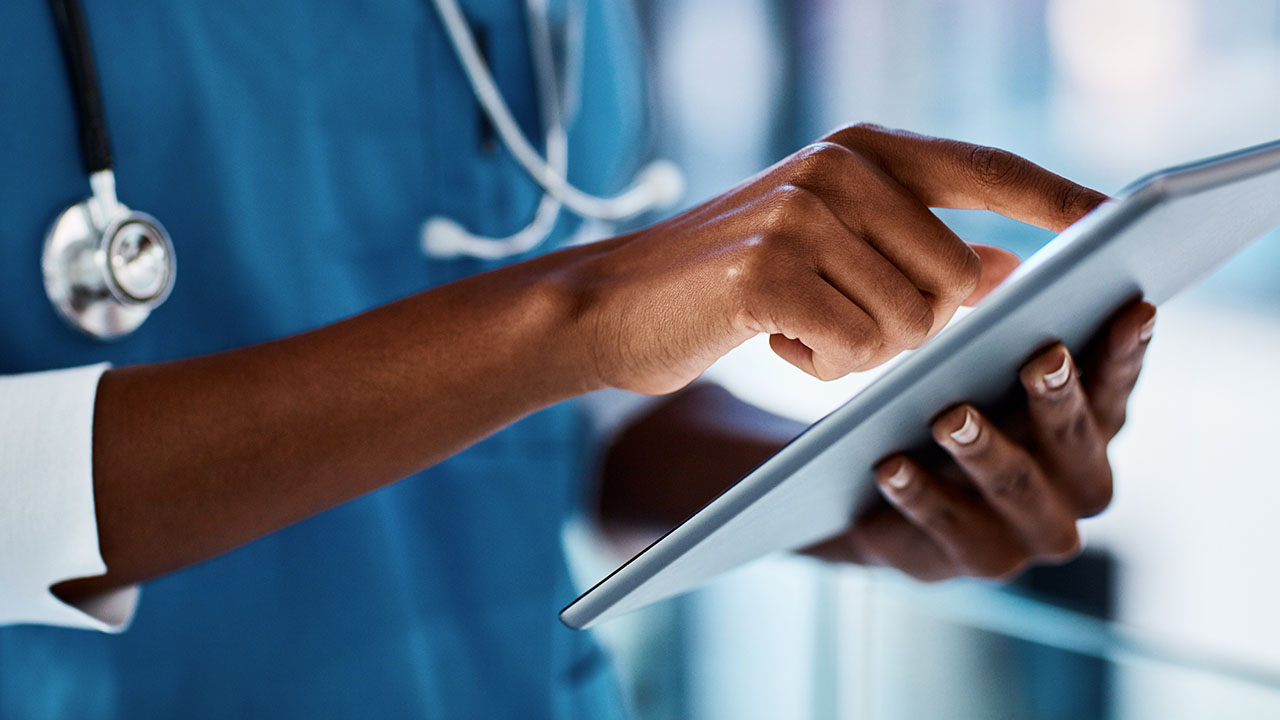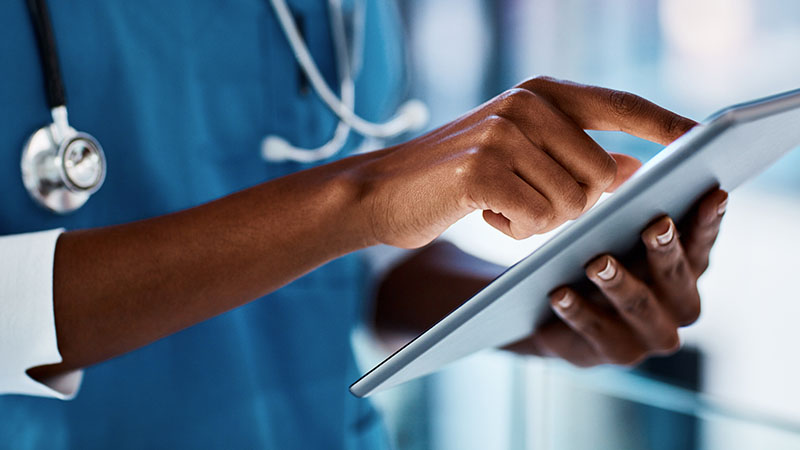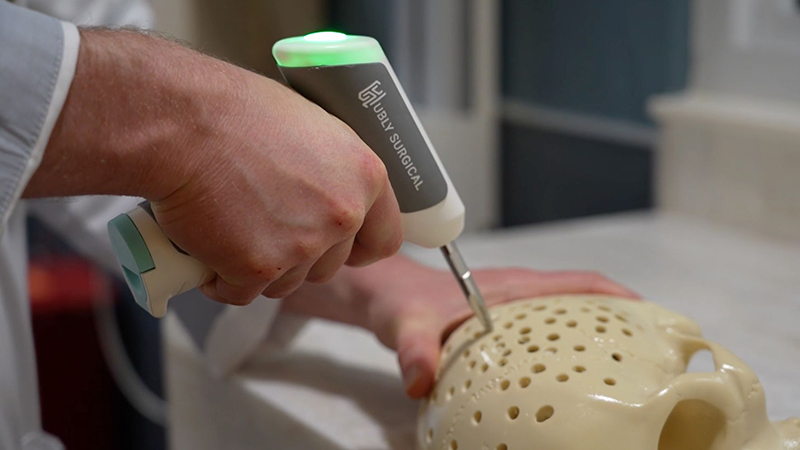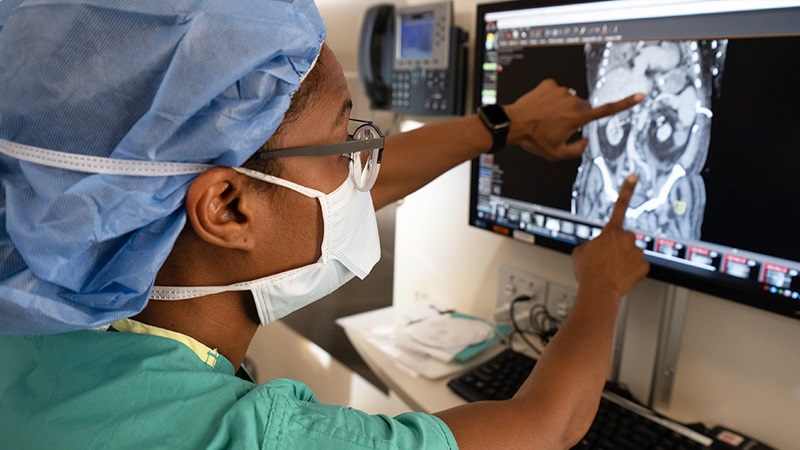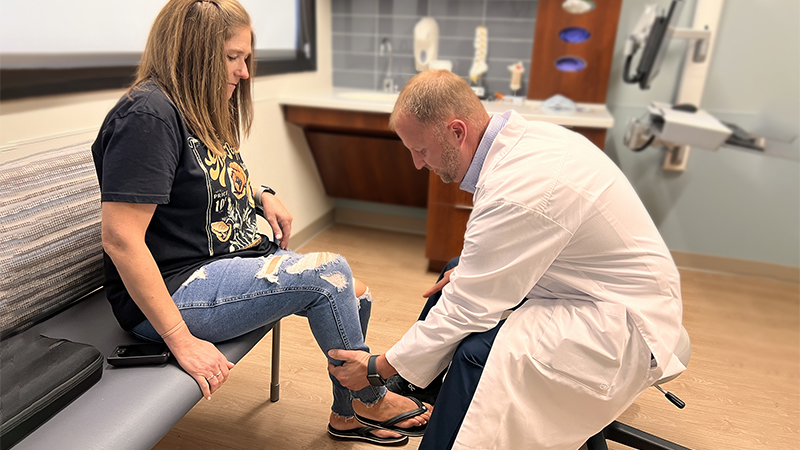Telestroke Program Brings Faster Critical Care
During a Stroke, Every Minute Counts
Updated April 2024
Stroke is a leading cause of disability and the fifth leading cause of death in the U.S., according to the Centers for Disease Control and Prevention. When a patient is having a stroke, every minute counts. Thanks to advances in technology, a neurologist can quickly assess someone with stroke symptoms, even if they are miles apart.
Stroke: The First Symptoms
There are two types of stroke.
- An ischemic stroke, the more common type, happens when a blood vessel becomes blocked.
- A hemorrhagic stroke happens when a blood vessel bursts or leaks.
Both types of stroke block blood flow to the brain. This deprives brain cells of oxygen and can cause permanent damage.
The Telestroke Program brings the neurologist to wherever the patient might be.— Fan Z. Caprio, MD
"Both of these types of strokes are treatable,” says Fan Z. Caprio, MD, a Northwestern Medicine neurologist. “However, the treatments are different, and they are very time sensitive."
Each moment counts during a stroke. The sooner someone receives treatment, the better their chance of survival. The acronym B.E. F.A.S.T. can help you spot stroke symptoms quickly. When you know what signs to look for, you can help someone having a stroke get the emergency medical help they need.
Stroke symptoms come on suddenly and include:
- B: Balance. Does the person have trouble with balance? Do they feel dizzy? Are they walking differently?
- E: Eyes. Ask them about their eyesight. Do they have vision loss, or blurry or double vision?
- F: Face. Does one side of their face droop or look uneven? Ask them if their face feels numb. Tell them to smile and note if their smile is uneven.
- A: Arm. Is one of their arms weak or numb? Ask them to raise both arms, and see if one arm drifts downward.
- S: Speech. Ask them to say a simple phrase. Are they hard to understand? Do they seem confused? Are they having trouble understanding you?
- T: Time to call 911. If someone has any of these symptoms, call 911 right away. Take note of the time their symptoms first started, and share that information with first responders.
Dr. Caprio warns that stroke symptoms vary between people. "I want to emphasize that it may not be a full inability to speak or complete paralysis, for example,” she says. “It's any sudden loss of neurologic function."
Even if someone's symptoms seem relatively minor, call 911 right away.
What Is the Telestroke Program?
Once you arrive at the emergency department at a Northwestern Medicine hospital, your healthcare team may call stroke specialists in the Northwestern Medicine health system. They can provide assistance and guidance through a telehealth program specifically for stroke care. This brings more expertise and resources to hospitals that may not have a Comprehensive Stroke Center.
The Northwestern Medicine Telestroke Program features a two-way video and audio system. It allows board-certified neurologists from the Comprehensive Stroke Centers at Northwestern Memorial Hospital and Northwestern Medicine Central DuPage Hospital to meet virtually with patients having strokes. The physicians conduct virtual exams and collaborate with the emergency medicine teams at area hospitals. At the same time, the neurologist has instant access to the patient's health information through electronic medical records. They can see the patient's vital signs, CT scans and laboratory results.
The Northwestern Medicine Telestroke Program is offered at four hospitals:
- Northwestern Medicine Lake Forest Hospital
- Northwestern Medicine Kishwaukee Hospital
- Northwestern Medicine Valley West Hospital
- Northwestern Medicine Palos Hospital
These hospitals can determine if specialized care is needed on a case-by-case basis.
"The Telestroke Program brings the neurologist to wherever the patient might be," says Kristin L. Miller, MD, medical director of the Telestroke Program. "We have immediate access to be able to examine the patient with the help of emergency room staff and provide recommendations for their care."
The neurologist can let on-site physicians know if the patient needs a lifesaving clot-busting medication. The neurologist can also let the on-site care team know if the patient should be transferred to a Comprehensive Stroke Center for more advanced levels of care, as well as talk with the patient and family.
"Telestroke technology allows us to coordinate lifesaving care from miles away," says Dr. Miller. "Using the resources of our Comprehensive Stroke Centers, we’re able to collaborate with other emergency departments to provide the best treatment quickly, saving lives and reducing the potentially debilitating consequences of stroke."
When Every Minute Matters
"Immediate treatment after stroke is critical to help minimize the risk of serious brain damage," says Andrew P. Oleksyn, DO, medical director of Emergency Medicine at Kishwaukee Hospital. "The goal is to diagnose and treat stroke within the 'golden hour,' or the first 60 minutes following onset of symptoms, when patients have much better outcomes."
The Telestroke Program helps improve access for patients throughout Chicagoland and the suburbs who aren’t close to a Comprehensive Stroke Center. "If we are able to interact and see these patients as they're having a stroke, we can treat them in a timely manner that can dramatically improve their outcomes," says Dr. Miller.
Dr. Caprio emphasizes that it is a team approach. "Not only do we partner and collaborate with the hospital physicians and staff members, but there also is a large team that comes together to deliver care," she says. "The telestroke technology allows the team to work in coordination to identify the issue, transfer the patient to another hospital, if needed, and determine the next appropriate treatment."
In addition to the Telestroke Program, the Northwestern Medicine Stroke Program works to bring timely, expert stroke care through:
- Two Comprehensive Stroke Centers accredited by The Joint Commission
- Three Primary Stroke Centers
- A multidisciplinary physician team that includes neurology, neurosurgery, cerebrovascular neurosurgery, radiology and neuro-critical care
- The Mobile Stroke Unit, an ambulance equipped with tools and staff that can quickly diagnose a stroke, coordinate electronically with a Northwestern Medicine neurologist and start treating patients right away.
"The important thing is that we're reaching patients wherever they live," says Dr. Caprio.
Because when it comes to a stroke, every minute counts.
Learn more about stroke and cerebrovascular disease.

